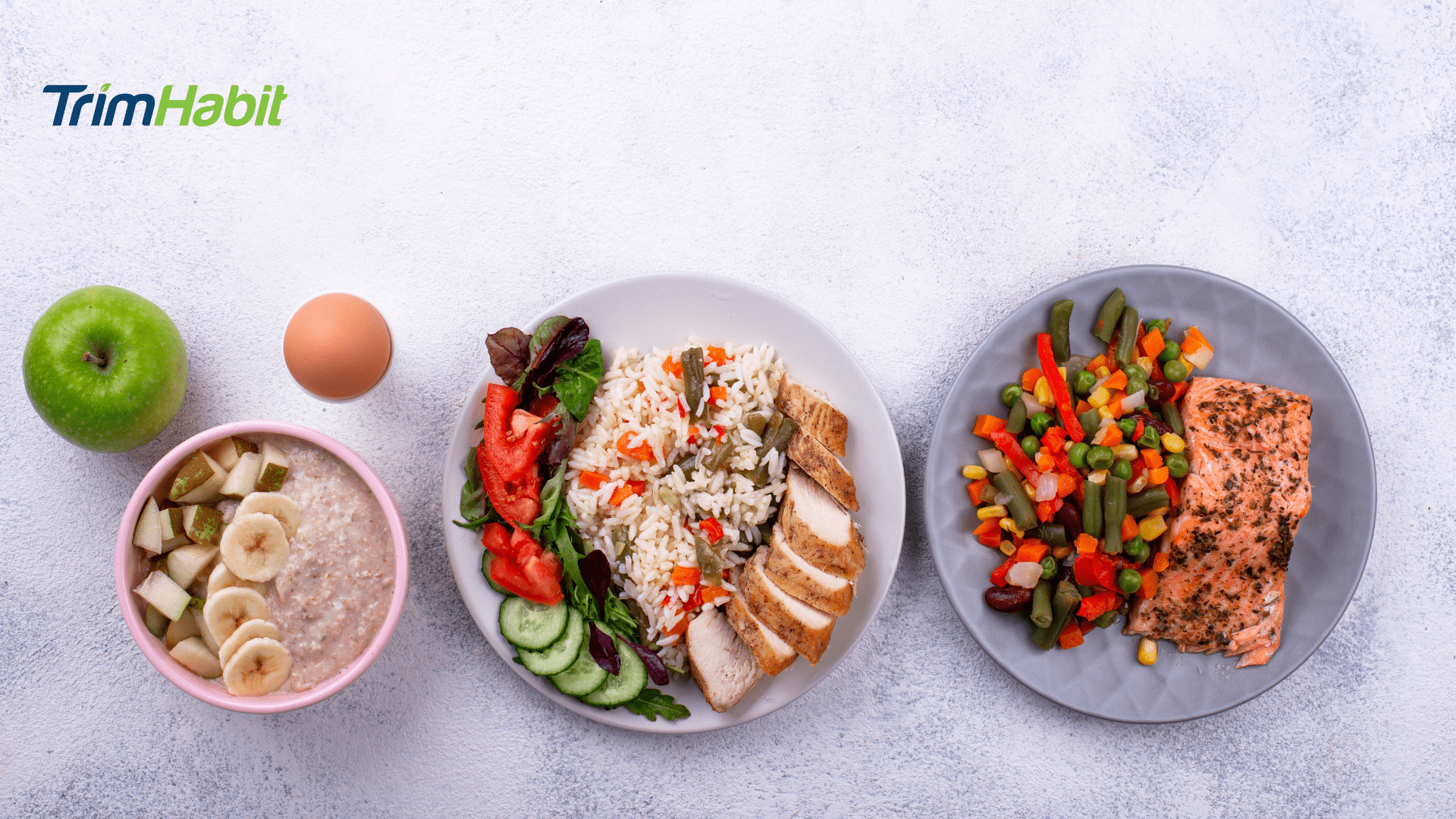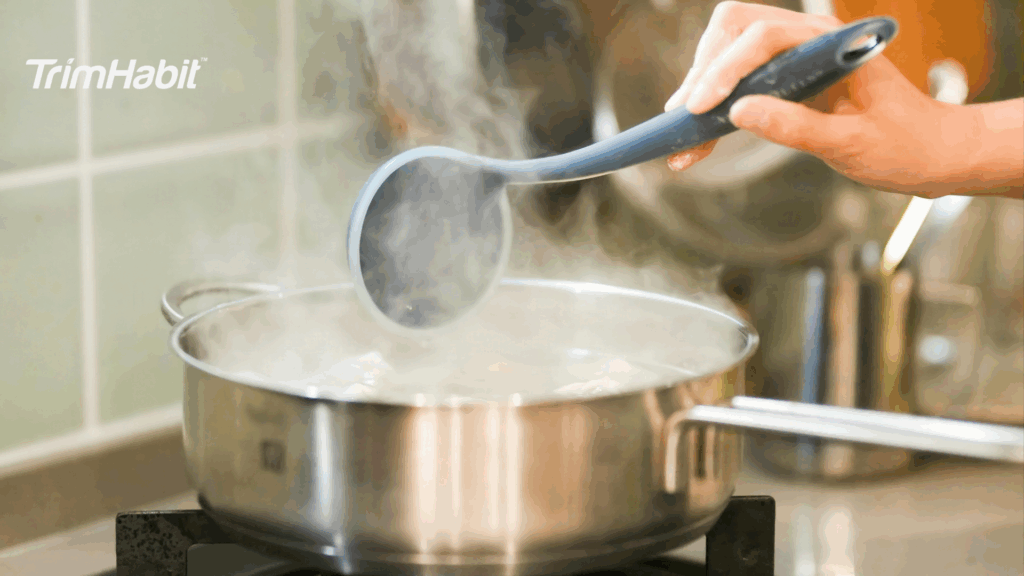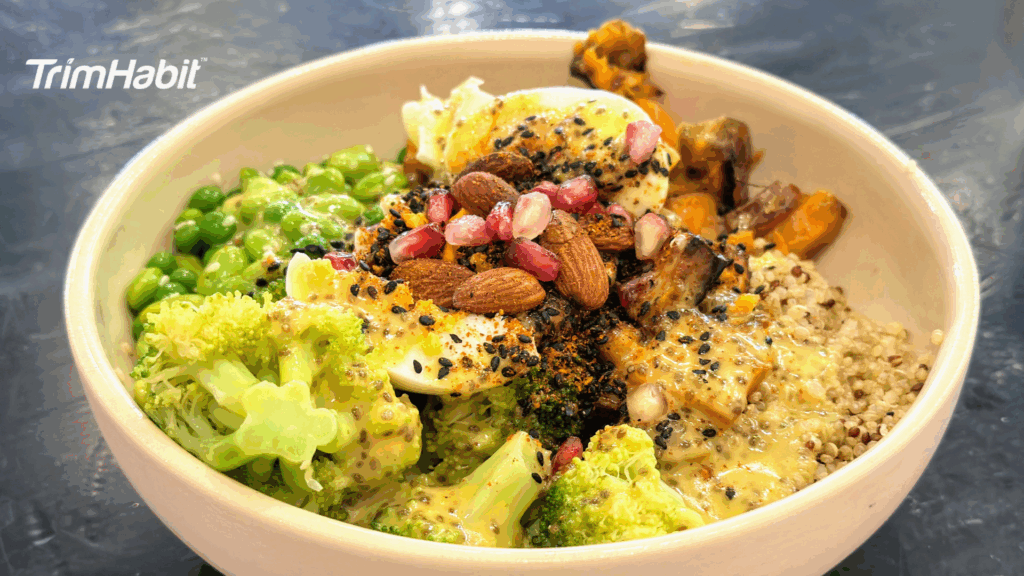Portion control tools that help on semaglutide aren’t just about eating less—they’re about eating smart. While semaglutide can significantly reduce appetite, it can also make it tricky to ensure you get the right balance of nutrients for your overall well-being.
Achieving and maintaining a healthy weight and supporting overall well-being requires a balanced diet and ongoing healthy habits, not just medication. The right portion control tools can help you avoid undereating, keep your meals balanced, and make healthy eating habits more straightforward. From simple kitchen gadgets to innovative smart devices, these tools can support your wellness goals and help you get the most out of your semaglutide journey.
Semaglutide works by mimicking a naturally occurring hormone to help regulate appetite and digestion, and understanding the effects of semaglutide makes it a practical aid for weight management.
What Is Semaglutide?
Semaglutide is a prescription medication used to help manage type 2 diabetes and, in some instances, obesity or overweight. As a weight loss medication, prescribed semaglutide is approved for both diabetes and weight management1.
It belongs to a class of drugs called GLP-1 receptor agonists (glucagon-like peptide-1). These drugs mimic the natural hormone GLP-1, which helps regulate blood sugar levels, appetite, and digestion. The effects of semaglutide include appetite regulation, hunger reduction, and significant weight loss when combined with lifestyle and dietary changes2.
Here’s what it does:
- Lowers blood sugar by stimulating insulin release and reducing glucose production in the liver3.
- Slows stomach emptying, which helps control appetite and keep you feeling full longer4.
- Supports weight loss in many patients, especially at higher doses5.
Brand names you might see include:
- Ozempic – mainly prescribed for type 2 diabetes.
- Wegovy – prescribed for weight management.
- Rybelsus – an oral tablet version for type 2 diabetes.
Semaglutide for weight loss is often prescribed as part of a comprehensive semaglutide treatment plan that includes dietary and lifestyle modifications.
Important note: It’s not an instant “magic pill.” Semaglutide works best alongside a healthy diet, physical activity, and regular medical supervision. Always consult a healthcare professional and review your medical history before starting semaglutide to ensure it is safe and appropriate for you.
The Importance Of Balanced Nutrition
Nutrition is more than eating to satisfy hunger, it’s the foundation of health and wellness. A balanced diet gives the body the essential vitamins, minerals, and macronutrients to function optimally. Without proper nourishment, energy levels drop, the immune system weakens, and the risk of chronic diseases increases.
Key Components Of A Balanced Diet
A truly balanced diet includes a mix of:
- Carbohydrates – the body’s primary energy source, ideally from whole grains, fruits, and vegetables.
- Proteins are necessary for muscle repair, growth, and overall body maintenance and are found in lean meats, legumes, fish, eggs, and dairy.
- Healthy fats – support brain health, hormone production, and nutrient absorption; sources include nuts, seeds, avocados, and olive oil.
- Vitamins and minerals – essential for immune health, bone strength, and metabolism, best obtained from various colorful fruits and vegetables.
- Water – often overlooked, but critical for hydration, digestion, and overall bodily functions.
Benefits of Balanced Nutrition
- Boosts energy and mood – Proper fuel helps stabilize blood sugar, preventing energy crashes.
- Strengthens immunity – Nutrients like vitamin C, zinc, and antioxidants support defense against illnesses.
- Supports healthy weight management – Balanced meals help prevent overeating and cravings.
- Promotes long-term health – Reduces the risk of chronic diseases like heart disease, diabetes, and certain cancers.
Simple Tips for Achieving Balance
- Fill half your plate with vegetables and fruits.
- Choose whole grains over refined ones.
- Incorporate lean proteins at every meal.
- Limit added sugars and processed foods.
- Stay hydrated throughout the day.
Why Portion Control Still Matters On Your Weight Loss Journey With Semaglutide
Even though semaglutide helps you feel full faster and eat less, portion control still matters for a few key reasons. Portion control is a key part of managing weight, and it is crucial to practice portion control to support successful weight loss efforts while on semaglutide.
A balanced and nutritious diet, healthy lifestyle changes, and a structured diet plan are essential for achieving your health goals and long-term success. Remember, lifestyle changes are necessary for sustainable results, not just medication.
You Can Still Overeat — Just Less Often
Semaglutide curbs appetite, but it doesn’t completely stop you from eating large portions if you want to. To support successful weight loss, practicing portion control and mindful eating is important, paying attention to hunger cues and savoring your food, even when your appetite is reduced. Over time, consistently eating more than your body needs can slow or stall weight loss.
Nutrient Quality > Quantity Alone
You could eat small portions of calorie-dense, low-nutrient foods (like chips or pastries) and still exceed your calorie needs. Instead, focus on choosing nutrient-dense foods that provide essential nutrients to support your health and weight management goals. Portion control and healthier food choices ensure you’re fueling your body well.
It’s also important to avoid empty calories from high sugar foods, sugary snacks, and sugary foods, and to limit certain foods that can undermine your progress. Balanced nutrition is key for supporting overall health and maximizing the benefits of semaglutide.
Calorie Density Adds Up Fast
Monitoring calorie intake is essential to avoid excess calories from fried foods, greasy foods, and unhealthy fats, which can contribute to weight gain and negatively impact cholesterol and heart health.
Foods high in fat, sugar, or refined carbs pack a lot of calories into a small volume. Even with reduced appetite, large servings of these foods can still lead to weight gain.
Instead, choose complex carbohydrates and whole grains to support better health outcomes and maintain steady energy levels.
Long-Term Habits Matter
Semaglutide isn’t meant to be used forever for most people. Developing healthy portion control habits now means you’re more likely to maintain results after stopping the medication. Building a healthy lifestyle and consistent exercise habits is essential for a sustainable weight loss journey, and it supports sustainable weight loss even after you stop using semaglutide.
Appetite Signals Can Change Over Time
Semaglutide affects appetite by reducing appetite signals, helping to regulate hunger and promote feelings of fullness. Your body can adapt to appetite suppression. Sometimes, hunger levels increase again after months on semaglutide, making portion control a crucial built-in safeguard. Changes in appetite can influence how much weight you lose over time, as reduced appetite often leads to lower calorie intake and greater weight loss.
Blood Sugar Control Needs Balance
For those using semaglutide for type 2 diabetes, eating consistent, balanced portions plays a crucial role in diabetes management by helping to prevent big swings in blood sugar which is something the medication alone can’t fully manage.
Following a balanced diet plan supports blood sugar regulation and promotes overall health, making semaglutide more effective as part of a comprehensive diabetes management strategy.
Portion Control Tools That Help On Semaglutide
Here’s a solid list of top portion control tools, which are especially helpful if you’re on semaglutide and want to build lasting healthy eating habits. These tools make it easier to include key components of a nutritious diet, such as lean protein sources and healthy fats, essential for supporting muscle mass and managing body weight. Following dietary patterns like the Mediterranean diet can further enhance the benefits of portion control.
Measuring Cups & Spoons
- Best for: Tracking dry foods like oats, rice, pasta, nuts, complex carbohydrates, and whole grains.
- Why it works: Gives you an exact serving size without guessing.
Food Scale
- Best for: Accurately weighing meat, cheese, and high-calorie foods.
- Why it works: Removes portion size guesswork, especially for calorie-dense items.
Portion Control Plates
- Best for: Meals at home.
- Why it works: Plates are divided into sections — usually half for veggies, a quarter for protein, and a quarter for carbs — making balanced eating visually easy.
Small Bowls & Plates
- Best for: Reducing portion sizes without feeling deprived.
- Why it works: Our brains perceive a full small plate as more satisfying than a half-empty large plate.
Pre-Portioned Snack Containers
- Best for: Nuts, trail mix, crackers, or fruit.
- Why it works: Helps avoid mindless eating straight from the bag.
Bento Boxes
- Best for: Lunches on the go.
- Why it works: Pre-divided compartments keep portions in check and prevent oversized meals.
Clear Water Bottle
- Best for: Drinking before meals.
- Why it works: Staying hydrated can help you feel full and naturally limit portion sizes.
Digital Food Tracking Apps
- Best for: Logging meals and tracking nutrition over time.
- Why it works: Builds awareness of portion sizes versus what you think you eat.
Extra Tips For Portion Control On Semaglutide
Here are extra tips for keeping portions in check while on semaglutide — these go beyond just using tools:
- Eat slowly and mindfully, paying attention to hunger and fullness cues.
- Use smaller plates and bowls to help control serving sizes.
- Pre-portion snacks and meals instead of eating straight from the package.
- Avoid distractions like TV or phones during meals to focus on food.
- Plan meals ahead of time to avoid impulsive overeating.
- Stay hydrated, as thirst can sometimes be mistaken for hunger.
- Remember that taking semaglutide works best with healthy eating and lifestyle changes.
- Set clear weight loss goals to help guide your dietary choices and track your progress.
- Incorporate physical activity into your routine to support your weight loss goals and overall health while taking semaglutide.
Eat Mindfully
- Put your fork down between bites.
- Chew slowly and focus on taste and texture.
- This lets your brain register fullness before you overeat.
Start with Veggies or Protein
- Begin meals with high-fiber vegetables or lean protein.
- These help you feel fuller and naturally limit how much you eat afterward.
Pre-Plate Your Meals
- Instead of eating family-style from shared dishes, serve your portion onto a plate first.
- Avoid keeping large serving bowls at the table.
Use the “Half-Plate” Rule
- Fill half your plate with non-starchy vegetables.
- This crowds out higher-calorie foods while keeping meals satisfying.
Pause Before Seconds
- Wait at least 10 minutes before deciding to take more food.
- Your satiety signals need time to catch up.
Summary
Semaglutide, a GLP-1 receptor agonist prescribed for type 2 diabetes and weight management, reduces appetite, regulates digestion, and supports weight loss. While it makes it easier to eat less, portion control is still vital for balanced nutrition, sustainable results, and to help regulate blood sugar levels. Overeating, calorie-dense foods, or poor long-term habits can undermine progress, even on semaglutide.
Using portion control tools, such as measuring cups, food scales, portion plates, small bowls, bento boxes, snack containers, and digital tracking apps, can make balanced eating more straightforward and more consistent. These tools help manage calorie intake, encourage nutrient-dense food choices, and promote mindful eating as part of a successful diet plan. Additional strategies, like eating slowly, staying hydrated, pre-portioning snacks, avoiding distractions, and following the “half-plate” rule, reinforce healthy eating habits.









